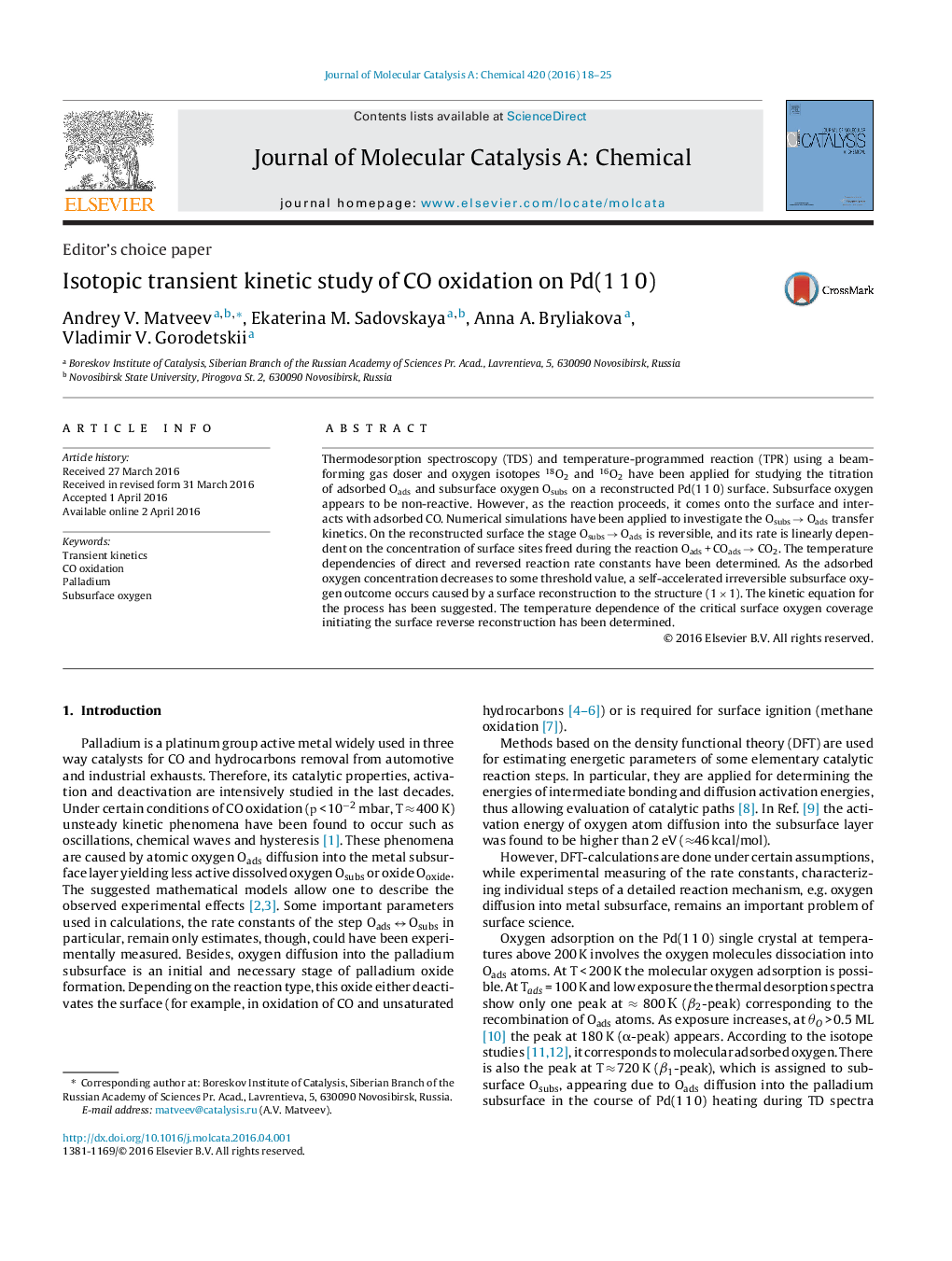| Article ID | Journal | Published Year | Pages | File Type |
|---|---|---|---|---|
| 64570 | Journal of Molecular Catalysis A: Chemical | 2016 | 8 Pages |
•Subsurface oxygen was found to be non-reactive.•The rate constants of oxygen Оads diffusion into the Pd(1 1 0) subsurface layer and back were determined.•At Т0 > 400 K oxygen atoms are located mostly in the subsurface layer of palladium.
Thermodesorption spectroscopy (TDS) and temperature-programmed reaction (TPR) using a beam-forming gas doser and oxygen isotopes 18O2 and 16O2 have been applied for studying the titration of adsorbed Оads and subsurface oxygen Оsubs on a reconstructed Pd(1 1 0) surface. Subsurface oxygen appears to be non-reactive. However, as the reaction proceeds, it comes onto the surface and interacts with adsorbed CO. Numerical simulations have been applied to investigate the Оsubs → Оads transfer kinetics. On the reconstructed surface the stage Оsubs → Оads is reversible, and its rate is linearly dependent on the concentration of surface sites freed during the reaction Оads + СОads → СО2. The temperature dependencies of direct and reversed reaction rate constants have been determined. As the adsorbed oxygen concentration decreases to some threshold value, a self-accelerated irreversible subsurface oxygen outcome occurs caused by a surface reconstruction to the structure (1 × 1). The kinetic equation for the process has been suggested. The temperature dependence of the critical surface oxygen coverage initiating the surface reverse reconstruction has been determined.
Graphical abstractFigure optionsDownload full-size imageDownload high-quality image (189 K)Download as PowerPoint slide
